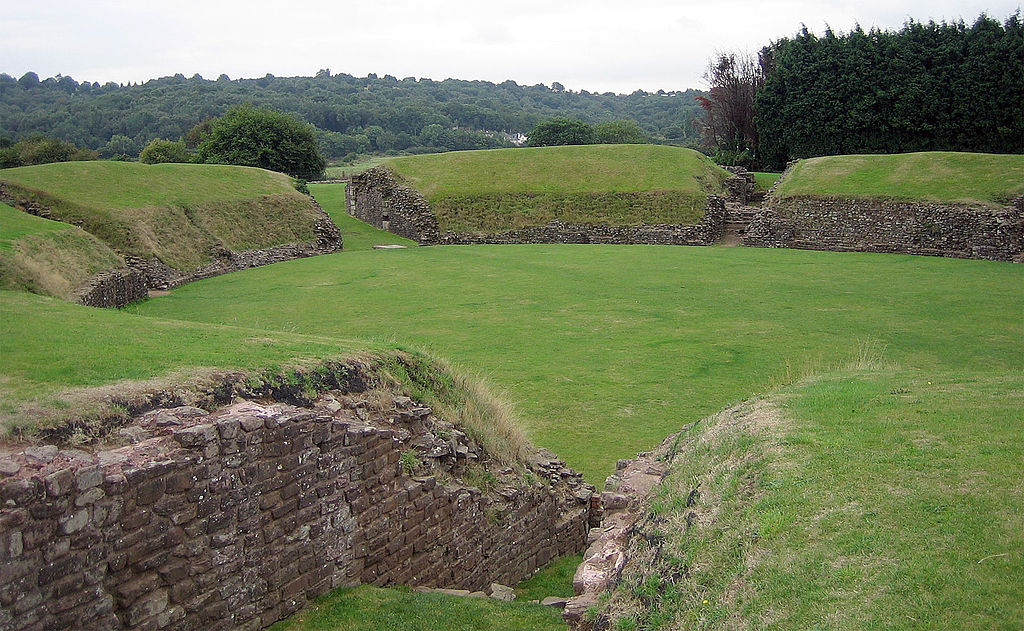Isca Augusta (or Isca Silurum) was a Roman legionary fortress and settlement, the remains of which lie beneath parts of the present-day village of Caerleon on the northern outskirts of the city of Newport in South Wales.
Name
The Brythonic name Isca means “water” and refers to the River Usk. The suffix Augusta appears in the Ravenna Cosmography and was an honorific title taken from the legion stationed there. The place is commonly referred to as Isca Silurum to differentiate it from Isca Dumnoniorum and because it lay in the territory of the Silures tribe. However, there is no evidence that this form was used in Roman times. The later name, Caerleon, is derived from the Welsh for “fortress of the legion”.
Fortress
Isca became the headquarters of the 2nd Legion Augusta in about AD 75, when Governor Sextus Julius Frontinus began the conquest of Roman Wales. They built a large “playing-card” shaped fort with initially a timber palisade which was later replaced in stone. The interior was fitted out with the usual array of military buildings: a headquarters building, legate’s residence, tribunes’ houses, hospital, large bath house, workshops, barrack blocks, granaries and an amphitheatre.
By the 120s, detachments or vexillations of the legion were needed elsewhere in the province and Isca became more of a military base than a garrison. However, it is thought that each cohort still maintained a presence at the fortress. When Septimus Severus seized power in the 190s, he had Isca refurbished and the legion were in residence rebuilding themselves after heavy losses on the Continent. Further restoration took place under Caracalla, when the south-west gate was rebuilt, the amphitheatre remodelled and barrack blocks re-roofed and otherwise repaired. The legion may have been called away to fight for one of the many emperors claiming power in the late 3rd century. Although most of the fort lay empty, a ‘caretaker’ squad are thought to have maintained the facilities and there was reoccupation and rebuilding work as late as the 270s. The main military structures are thought to have finally been demolished by the usurpers, Carausius or Allectus, when the legion was needed to repel a potential invasion from the Continent. The stone from Isca may have been used for building defences on the south coast. There may still have been an occasional military presence as late as the early 4th century, but the fortress was probably later taken over by the people of the surrounding vicus. The basilica of the baths was used as a cattle pen.
Recent finds suggest Roman occupation of some kind as late as AD 380.
Amphitheatre
Because of its rounded form, the unexcavated amphitheatre was known to locals as ‘King Arthur’s Round Table’, but there is no known connection. An initial investigation in 1909 showed the potential for a full-scale excavation of the structure, which began in 1926 and was supervised by Victor Erle Nash-Williams. This revealed, among other things, that the amphitheatre had been built around AD 90, but had twice been partially reconstructed, once in the early part of the 2nd century, and again about a hundred years later. The arena is oval in shape, with eight entrances, and the stadium is thought to have had a capacity of around six thousand spectator
Discover more from LandmarkLocation.com
Subscribe to get the latest posts sent to your email.


